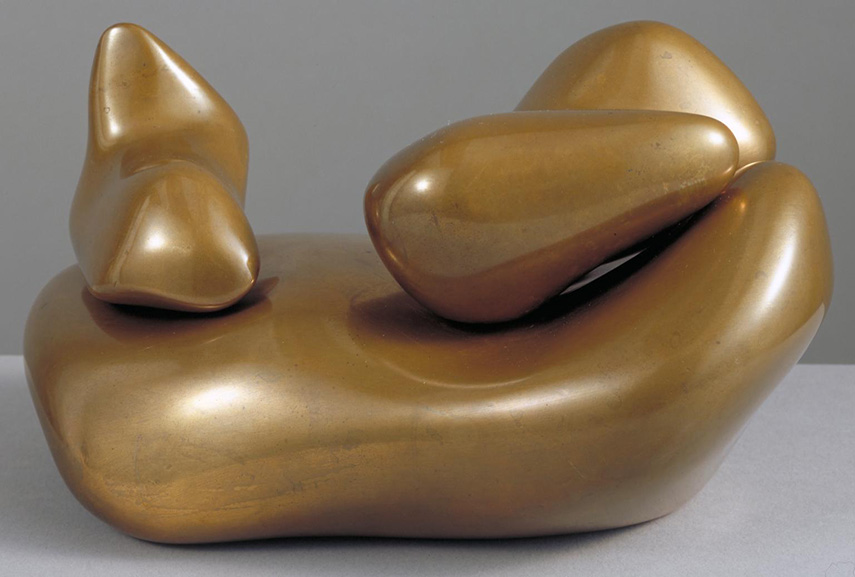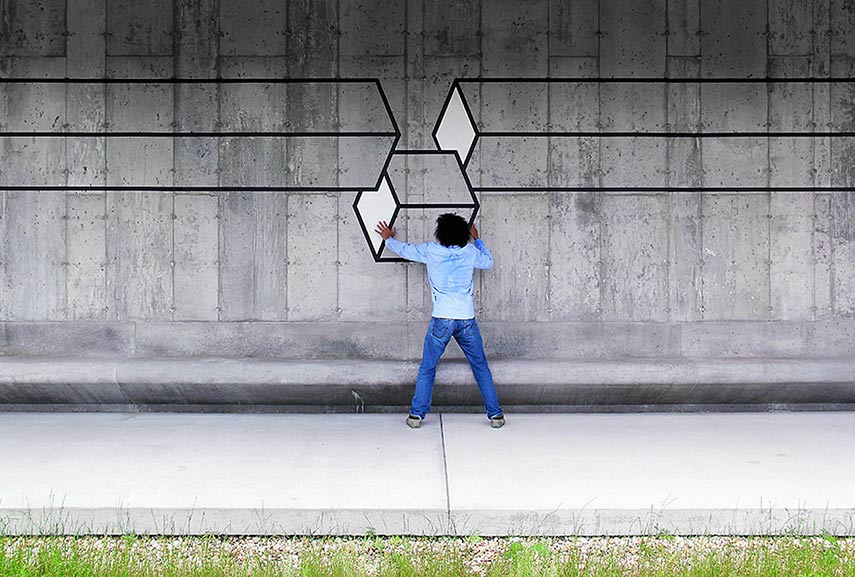What Is the Art Called Where You Make a Lot of Curcles to Form a Picture
The story of form in art is above anything else a story that concerns issues of space, depth, light, and the structure of an illusion. Equally one of the elements of art , along with the line, shape, texture, value, space, and color, form in art helps artists to produce an illusion of 3D and depth on a two-dimensional surface. In contrast to the idea of a shape, which explains the nature of two-dimensionality, form in art refers to objects which have length, width, and superlative. When shapes receive the 3rd dimension of depth, they get forms and as such a circle becomes a sphere, squares get cubes, and the triangle becomes a cone or a pyramid [ane]. When we are thinking well-nigh the examples of grade in fine art, we can say that it exists in both real and implied manners. In sculptural pieces, the form is real, while in drawing and in painting, the awareness of depth needs to exist implied through the utilise of light and the contrast of highlights and shadow areas.

Definition of Form in Art : The Ii Types
Referring to the thought that objects need to have length, width, and tiptop in order to be considered forms, the division of form in fine art came to ii major categories. The first is the idea of geometric forms. These, as mentioned above, we define equally commonly man-fabricated, ie. artists utilise the effects of light and modeling to produce them. Attempting to pigment or draw representationally, artists need to understand the effects of light on an object, as this helps them create an illusion of form. The light on an object is understood through highlight – the expanse where the low-cal direct hits the object; the mid tone as the middle tone of the color on an object; the core shadow as the area which is shaded on the object and every bit such the darkest tone of colour, the cast shadow which represent the shaded effect on surrounding object and the surface due to the blocked light, and the reflected highlight which is a calorie-free area of the objects due to the surrounding forms. Through this understanding of grade in art, the typical ii-dimensional shapes such as a square or a circumvolve receive the third dimension and go geometric forms ie. a cone, cube, sphere, and cylinder. These forms were extremely influential on the birth of abstract art and avant-garde art, especially Cubism. Due to the extensive application of the cube in numerous Cubist paintings or drawings, the motility in fact, took its proper noun and became the most revolutionary period of the 20th-century art.
On the other paw, organic forms too accept length, width, and height only are non angular and strict in construction. They rely more on adventure and the laws which for many apply to the laws in nature itself. They are more than free and random and as such no organic form can exist an identical re-create of the other. These organic forms were crucial for the birth of abstract sculpture.

The Existent and the Implied Surroundings
Equally we have mentioned in the kickoff, the give-and-take of form in art is besides a talk concerning the surroundings and depth in art. In the sculpture discipline, the thought of form in fine art is understood without many questions, equally these already inhabit the three-dimensional space of a room, gallery, or the outdoor. This is non the case when it comes to painting or drawing and many artists use this play with three-dimensionality to create mesmerizing examples of grade in art which tease public perception. Using the notion of both positive and negative space, M.C Escher created amazing artworks which dislocated the eye and made information technology difficult for us to understand whether the highlight of the pieces was on the groundwork or the shape[two]. With the help of a trompe fifty'oeil technique , many authors play with the idea of perception and three-dimensionality as well. Such images and murals produce the idea of depth within a two-dimensional surface and play with various geometric or organic forms to practice so. Past mastering the principles of class in art and playing with purely two-dimensional form, artists produce amazing three-dimensional forms on a flat canvas, newspaper or even pavement.

Famous Artists and How they Illustrate the Form in Art
Visual artists rely on the furnishings of calorie-free and shadow in order to produce an illusion of iii-dimensional forms. The street artist Banksy uses this technique a lot and many of his celebrated images rely on the contrast betwixt black, grey, and white. Alongside Banksy, Aakash Nihalani uses the juxtaposition betwixt colors to produce the idea of depth[3]. Keen examples are his geometric art pieces and urban art installations which play with the perception of the eye and application of form in art to create gimmicky trompe l'oeil images. The famous sculptor Richard Serra creates massive free-continuing forms past bending flat sharp metals while Jeff Koons relies on volume to create his large-scale sculpture.
Explore Banksy's artworks on our marketplace!
Form in art needs to be understood as a story apropos infinite and the idea of three-dimensionality every bit much as information technology is a tale of light and dark. Alongside perspective in art, volume, the notion of the rhythm, and dissimilarity, grade in fine art helps artists become magicians and produce magic on a ii-dimensional surface.

Editors' Tip: Making Art: Grade and Meaning
This comprehensive introduction to art and design explores making artifacts as a procedure of making meaning. Making Art: Form and Significant offers a framework for understanding how all the aspects of an artwork--discipline matter, medium, course, process, and contexts--interact. The text'southward wide array of examples and its emphasis on late-modernism and postmodern fine art give students a thorough await at the expressive possibilities of traditional design elements and principles and contemporary practices, including the utilize of computer-based, time-based, and lens-based media. With creative person quotes, clearly divers key terms, and a chapter defended to studio critiques, Making Art allows students to join the conversation of contemporary art and gives them a jump first in thinking and talking about their work using the language and concepts of today's fine art globe.
References:
All images used for illustrative purposes only. Featured image: Geometric Forms in Art. Epitome via thevirtualinstructor.com
andersonhaptiotnohns.blogspot.com
Source: https://www.widewalls.ch/magazine/form-in-art
0 Response to "What Is the Art Called Where You Make a Lot of Curcles to Form a Picture"
Post a Comment